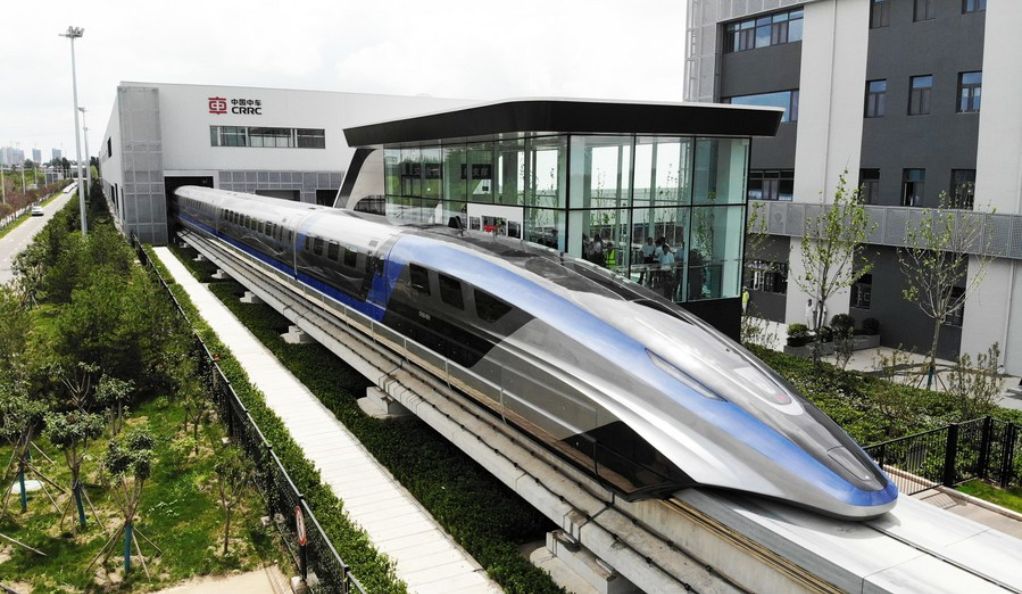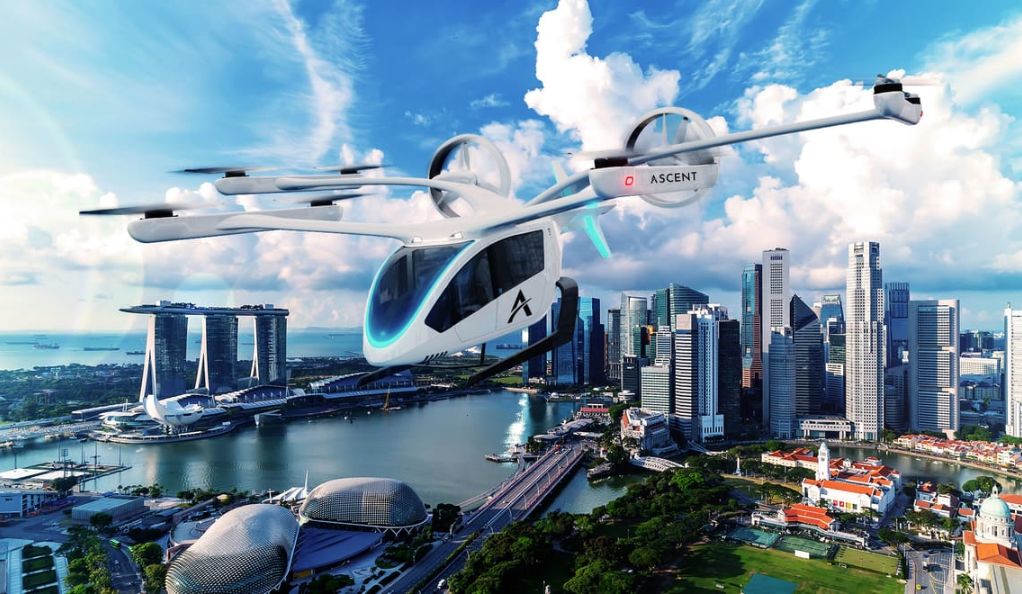Transportation, as a fundamental aspect of human civilization, has witnessed a remarkable evolution over the millennia. From the rudimentary methods of early humans to the sophisticated technologies of today, the journey of transportation is a testament to human ingenuity and the relentless pursuit of progress.
The Dawn of Transportation: Foot and Beast
Before the invention of the wheel or the domestication of animals, early humans relied solely on their feet for movement. Nomadic tribes traversed vast landscapes in search of food and shelter, marking the earliest form of transportation.
With the domestication of animals, particularly horses, camels, and oxen, transportation took its next significant leap. These animals became the primary means of carrying goods and people over long distances, paving the way for trade routes and early civilizations.
Table 1: Early Modes of Transportation
| Mode | Description | Era |
|---|---|---|
| On Foot | Reliance on human physical capability for movement. | Prehistoric |
| Animal-Driven | Use of domesticated animals like horses and camels for travel. | Ancient Civilizations |
The Wheel and Waterways: Catalysts of Change
The invention of the wheel, around 3500 BC, revolutionized transportation. It led to the creation of chariots and carts, making the movement of goods and people faster and more efficient. Simultaneously, civilizations recognized the potential of waterways. Boats and ships became vital for trade, exploration, and warfare, connecting distant lands and cultures.
The Industrial Revolution: Steam and Steel
The 18th and 19th centuries marked a transformative period in transportation. The invention of the steam engine gave birth to trains and steamships, drastically reducing travel time. Roads and bridges were constructed, and the world became more interconnected than ever.
Comparison Table: Pre-Industrial vs. Industrial Era Transportation
| Aspect | Pre-Industrial Era | Industrial Era |
|---|---|---|
| Primary Mode | Animal-driven carts, boats | Trains, steamships |
| Speed | Limited by animal endurance | Multi-fold increase with steam power |
| Infrastructure | Dirt paths, rudimentary bridges | Railroads, ports, paved roads |
The 20th Century and Beyond: The Age of Flight and Automation
The 20th century saw the advent of automobiles and airplanes, further shrinking the world. The latter half of the century introduced the concept of space travel. Today, we stand on the brink of autonomous vehicles, hyperloops, and even flying taxis.
The Importance of Innovation
Innovation in transportation is not just about speed or efficiency; it’s about reshaping the way we live, work, and interact. As we look to the future, sustainable and eco-friendly transportation solutions are paramount. Innovations like electric vehicles, efficient public transit systems, and alternative fuels are not just trends; they are necessities for a sustainable future.
Maglev Trains: The Future of Rail Travel
As the world races towards a future dominated by rapid technological advancements, one innovation stands out in the realm of transportation: Maglev trains. These trains, powered by the principles of magnetic levitation, promise to redefine the very essence of rail travel.

Magnetic Levitation Technology
Magnetic Levitation, or Maglev, is a technology that uses magnets to lift and propel vehicles, primarily trains, without them touching the ground. The fundamental principle behind Maglev is the magnetic repulsion between like poles.
In a Maglev system, there are two main sets of magnets:
- Electromagnets on the Train: These are placed on the underside of the train.
- Guideway Magnets: These are placed on the track on which the train runs.
When the train is powered, the electromagnets create a magnetic field which repels the guideway magnets. This repulsion causes the train to levitate, typically about 1 to 10 cm above the guideway. Once levitated, another set of magnets and coils are used to propel the train forward. Since there’s no contact between the train and the track, there’s virtually no friction, allowing the train to achieve remarkable speeds.
Benefits of Maglev Trains
- Speed: Maglev trains are among the fastest ground-based transportation systems. Without the hindrance of friction and with the power of electromagnetic propulsion, these trains can reach speeds exceeding 600 km/h (373 mph). For context, Japan’s L0 Series Maglev has achieved a record speed of 603 km/h during its test runs.
- Efficiency: The absence of physical contact between the train and the track means there’s no wear and tear on wheels or rails. This not only reduces maintenance costs but also ensures consistent performance over time. Moreover, the trains are powered by electricity, making them more energy-efficient compared to diesel-powered counterparts.
- Reduced Noise: Traditional trains produce noise primarily due to wheel-track interaction and air resistance. Maglev trains, levitating above their tracks, eliminate the former source of noise. The result is a quieter, smoother ride, which is especially beneficial for densely populated urban areas where noise pollution is a concern.
Flying Taxis: Soaring Above Traffic
The dream of flying cars, once confined to the pages of science fiction novels and futuristic movies, is on the cusp of becoming a reality. Flying taxis, as they are commonly referred to, promise to revolutionize urban transportation, offering a solution to the ever-growing problem of traffic congestion in major cities worldwide.

The Concept and Technology Behind Flying Taxis
What are Flying Taxis?
Flying taxis are essentially electric vertical take-off and landing (eVTOL) vehicles. Unlike traditional airplanes, they don’t require long runways. Instead, they can take off and land vertically, much like helicopters, but with a key difference: they are quieter, more energy-efficient, and designed for short intra-city commutes.
Propulsion and Flight:
Most flying taxis utilize multiple rotors or propellers for vertical lift. Once airborne, they transition to forward flight using aerodynamic wings and forward-facing propellers. The electric nature of their propulsion systems means they produce zero emissions at the point of use.
Autonomy and Safety:
While the initial phase of flying taxis might have pilots for added safety, the ultimate goal is full autonomy. Advanced sensors, cameras, and radar systems will be employed to navigate urban landscapes. Redundant systems, fail-safes, and parachutes are being integrated to ensure maximum safety.
Potential Impact on Urban Transportation and Infrastructure
Alleviating Traffic Congestion:
One of the most immediate benefits of flying taxis will be the reduction of traffic congestion. By utilizing the airspace above cities, flying taxis can offer direct routes to destinations, bypassing the snarls of ground-based traffic.
Infrastructure Development:
The rise of flying taxis will necessitate the development of “vertiports” – specialized take-off and landing zones. These could be integrated into existing infrastructure, like atop parking garages, malls, or transport hubs. The design and placement of vertiports will be crucial to ensure minimal noise and disruption to the surrounding areas.
Environmental Impact:
Being electric, flying taxis could play a role in reducing urban pollution. However, the environmental benefits will be contingent on the source of the electricity used to charge them. Renewable energy sources would amplify their green credentials.
Economic Implications:
Flying taxis could generate numerous jobs, from pilots and maintenance crews in the early stages to software developers and infrastructure specialists. Additionally, they could boost tourism, offering unique aerial views of cities.
Challenges and Considerations:
While promising, flying taxis also bring challenges. Air traffic management will become crucial to prevent mid-air collisions. Regulatory frameworks will need to evolve, and public acceptance, based on perceived safety and noise levels, will determine the rate of adoption.
Driverless Cars: The Road to Autonomy
The concept of a car driving itself, without human intervention, once seemed like a distant dream. Yet, in the span of a few decades, rapid advancements in technology have brought us to the brink of this transformative era in transportation. Driverless cars, also known as autonomous vehicles (AVs), are set to redefine our relationship with mobility.

Advances in AI and Machine Learning Driving This Innovation
Sensory Perception:
At the heart of an autonomous vehicle is its ability to perceive its environment. Through a combination of sensors like LIDAR (Light Detection and Ranging), cameras, radar, and ultrasonic devices, AVs can create a detailed map of their surroundings. This data is crucial for the vehicle to make real-time decisions.
Data Processing and Decision Making:
Once data is collected, it’s processed using advanced algorithms. Artificial Intelligence (AI) and Machine Learning (ML) play pivotal roles here. ML allows the car to learn from vast amounts of data collected from various driving scenarios, enabling it to predict and react to different situations on the road.
Continuous Learning:
One of the most potent aspects of AI in driverless cars is its ability to continuously learn and improve. As more AVs hit the roads, the collective data they gather can be used to refine algorithms, making each vehicle smarter and more efficient over time.
Safety, Efficiency, and the Potential to Reshape Cities
Enhanced Safety:
Human error is a leading cause of road accidents. Autonomous vehicles, with their precise sensors and quick decision-making capabilities, have the potential to drastically reduce accidents. They don’t get tired, distracted, or impaired, and they always adhere to traffic rules.
Increased Efficiency:
AVs can communicate with each other, leading to better traffic flow. Imagine a future where cars move in harmony, reducing traffic jams and optimizing speed based on real-time conditions. This can lead to reduced travel times and lower fuel consumption.
Reshaping Urban Landscapes:
With the rise of driverless cars, our cities could undergo a significant transformation. Parking spaces, which currently occupy vast areas of urban land, might become obsolete as AVs can drop passengers and move to areas where they don’t obstruct urban life. This could pave the way for more green spaces, pedestrian zones, and community areas.
Economic and Environmental Impact:
Autonomous vehicles could lead to reduced ownership, promoting a shift towards transportation-as-a-service. This could result in fewer cars on the road, leading to reduced emissions and a smaller environmental footprint.
Challenges Ahead:
While the promise of AVs is immense, challenges remain. Regulatory hurdles, ethical considerations (like decision-making in unavoidable accident scenarios), and public acceptance are issues that need addressing. Moreover, the transition phase, where human-driven and autonomous vehicles share the road, will require careful management.
Delivery Drones: Revolutionizing Logistics
In the ever-evolving landscape of technology, drones have emerged as a game-changer, especially in the realm of logistics and delivery services. These unmanned aerial vehicles (UAVs) have the potential to redefine how goods are transported, promising faster deliveries, reduced costs, and enhanced accessibility.

How Drones Are Changing the Face of Delivery Services
Speed and Efficiency:
Drones can bypass the challenges of ground-based transportation, such as traffic congestion and road conditions. This allows for quicker deliveries, especially for short distances. For businesses, this means faster turnaround times and higher customer satisfaction.
Accessibility to Remote Areas:
One of the most significant advantages of delivery drones is their ability to reach remote or hard-to-access areas. Whether it’s a mountainous region, an isolated island, or a dense urban jungle, drones can navigate these terrains with ease, ensuring that no location is too challenging to reach.
Environmental Benefits:
Drones, especially electric ones, have a smaller carbon footprint compared to traditional delivery vehicles. By reducing the reliance on trucks and vans, we can expect a decrease in emissions, leading to a more sustainable delivery model.
Cost-Effectiveness:
In the long run, drones could prove to be a more cost-effective solution for businesses. With reduced fuel costs, maintenance, and the potential to automate large parts of the delivery process, drones can offer significant savings.
Regulatory Challenges and the Future of Drone Deliveries
Air Traffic Management:
As drones become more prevalent, managing the airspace will become crucial. Ensuring that drones don’t collide with each other or with other aircraft requires sophisticated air traffic management systems.
Safety and Security Concerns:
The potential for accidents, whether due to technical failures or external factors, is a significant concern. Ensuring that drones can safely land or return to their base in case of issues is vital. Additionally, there are concerns about drones being used for illicit activities, which necessitates robust security measures.
Privacy Issues:
Drones equipped with cameras can raise privacy concerns. Regulating how and where drones can fly, especially in residential areas, will be essential to address these concerns.
Evolving Regulatory Frameworks:
Many countries are still in the process of developing comprehensive regulations for commercial drone use. These regulations will need to strike a balance between promoting innovation and ensuring safety, security, and privacy.
Integration with Traditional Logistics:
For drones to be truly effective, they need to be seamlessly integrated into the existing logistics infrastructure. This includes warehouses, order management systems, and customer communication channels.
Underground Roads: Delving Beneath the Surface
As urban centers around the world grapple with the challenges of congestion, pollution, and limited space, the concept of underground roads emerges as a potential solution. By moving traffic beneath the surface, we can reimagine our cities, making them more livable, efficient, and sustainable. But what does it truly entail to delve beneath the earth, and what are the implications of such an endeavor?

The Concept of Subterranean Transportation
What are Underground Roads?
Underground roads, or subterranean highways, refer to a network of tunnels and passages designed specifically for vehicular traffic beneath the earth’s surface. Much like subway systems, these roads aim to divert traffic from above ground, but they cater to personal and commercial vehicles instead of trains.
Historical Precedence:
While the idea might seem futuristic, the concept of underground transportation isn’t new. Subway and metro systems have been operational for over a century in many cities. The Channel Tunnel between the UK and France is another example of successful subterranean transportation, albeit for trains.
Benefits of Building Below Ground
Alleviating Surface Congestion:
By moving a significant portion of vehicular traffic underground, surface roads can be less congested, leading to smoother traffic flow and potentially shorter commute times.
Reclaiming Urban Space:
With reduced surface traffic, cities can repurpose roadways for green spaces, pedestrian zones, and recreational areas, enhancing the quality of urban life.
Environmental Benefits:
Underground roads can offer controlled environments, potentially reducing vehicle emissions by maintaining optimal driving conditions and speeds. Additionally, the surface can be freed from noise pollution associated with heavy traffic.
Enhanced Safety:
With controlled traffic conditions and the absence of external factors like weather, underground roads can potentially offer safer driving conditions.
Challenges of Building Below Ground
High Construction Costs:
Tunneling and building underground is expensive. The costs associated with excavation, reinforcement, ventilation, and safety systems can be significantly higher than surface road construction.
Geological and Environmental Concerns:
Not all areas are suitable for underground construction. Factors like soil type, water tables, and seismic activity can pose challenges. There’s also the potential impact on groundwater systems and ecosystems to consider.
Ventilation and Air Quality:
Ensuring clean air in an enclosed underground space is crucial. Sophisticated ventilation systems are required to manage vehicle emissions and maintain air quality.
Emergency Response:
Addressing accidents or emergencies in an underground setting can be more challenging than on surface roads. Designing tunnels with safety exits, fire suppression systems, and effective communication channels is vital.
Public Perception and Acceptance:
The idea of driving underground might not appeal to everyone. Concerns about claustrophobia, safety, and the unfamiliarity of such a system can influence public acceptance.
Hyperloop: Breaking Speed Barriers
In the quest for faster, more efficient transportation methods, the Hyperloop stands out as one of the most ambitious and revolutionary concepts. Envisioned as the fifth mode of transportation, the Hyperloop promises to drastically reduce intercity travel times, potentially turning hours-long journeys into mere minutes.

The Technology Behind Hyperloop
The Basic Concept:
The Hyperloop is a high-speed transportation system where passenger pods travel through low-pressure tubes at incredible speeds. By reducing air resistance in these tubes, the pods can achieve velocities that are challenging for traditional ground-based transportation.
Magnetic Levitation:
Much like Maglev trains, the Hyperloop utilizes magnetic levitation (maglev) technology. This means the pods don’t touch the tube’s surface, eliminating friction and allowing for higher speeds. The magnetic fields not only levitate the pod but also propel it forward.
Vacuum Tubes:
To achieve its groundbreaking speeds, the Hyperloop operates in tubes with a reduced air pressure, creating a near-vacuum environment. This significantly diminishes air resistance, one of the primary factors limiting speed in traditional transportation methods.
Propulsion and Braking:
Linear electric motors, placed at intervals along the tube, accelerate and decelerate the pod. These motors use electromagnetic pulses, ensuring smooth acceleration and braking.
The Potential to Connect Cities in Minutes
Transformative Speeds:
With projected speeds of up to 760 mph (1,220 km/h), the Hyperloop could make travel between cities astonishingly quick. For instance, a journey from Los Angeles to San Francisco, which takes about 6 hours by car, could be reduced to under 30 minutes.
Economic Impact:
Such rapid intercity travel could have profound economic implications. Cities connected by the Hyperloop could effectively function as suburbs of one another, leading to more distributed economic growth, reduced housing pressures in major urban centers, and increased workforce mobility.
Environmental Benefits:
The Hyperloop system is designed to be fully electric, with the potential to be powered by renewable energy sources. This makes it a cleaner alternative to many current transportation methods, aligning with global sustainability goals.
Urban Planning and Infrastructure:
The introduction of Hyperloop could reshape urban landscapes. Cities might expand and evolve, knowing that distant areas are just minutes away. This could lead to more balanced urban development and reduce the strain on densely populated areas.
Challenges Ahead:
While the potential of Hyperloop is immense, it’s not without challenges. Technical hurdles, regulatory approvals, safety concerns, and massive infrastructure investments are among the issues that need addressing. Public acceptance and the integration of Hyperloop stations into existing transportation networks are also crucial considerations.
Conclusion
As we stand at the crossroads of technological advancement and global challenges, the innovations in transportation present not just solutions, but visions of a world reimagined. From the soaring aspirations of flying taxis to the subterranean dreams of underground roads, and from the blistering speeds of the Hyperloop to the silent glide of Maglev trains, these innovations promise to redefine our relationship with distance, time, and space.
The potential of these advancements goes beyond mere convenience. They hold the promise of transforming our daily lives, reshaping our cities, and redefining our communities. Commutes that once took hours could be reduced to minutes, remote areas could become easily accessible, and the world, in many ways, could become a smaller, more connected place.
Yet, as we embrace these changes, it’s imperative to recognize the overarching importance of sustainability and efficiency. The future of transportation isn’t just about speed or innovation for its own sake; it’s about creating systems that coexist harmoniously with our environment, that consume resources responsibly, and that serve the needs of all, not just a privileged few.
In essence, the journey ahead in transportation is not just about getting from one place to another; it’s about building a future that is inclusive, sustainable, and in harmony with the planet we call home. As we accelerate into this promising future, let us do so with foresight, responsibility, and a commitment to the greater good.







